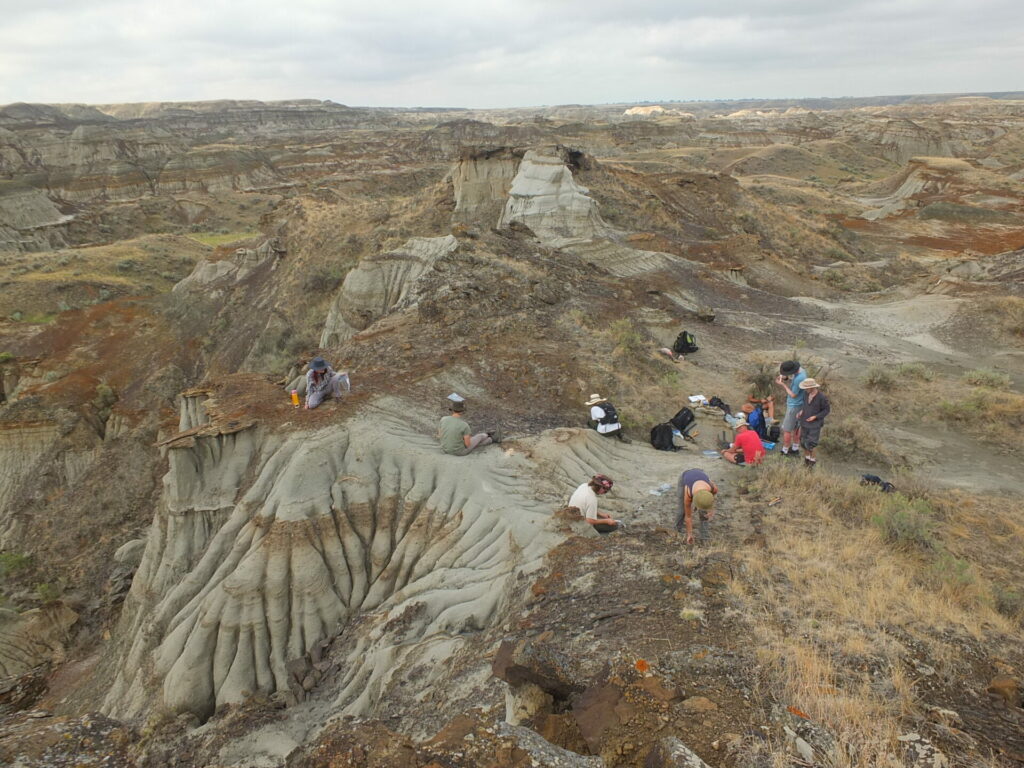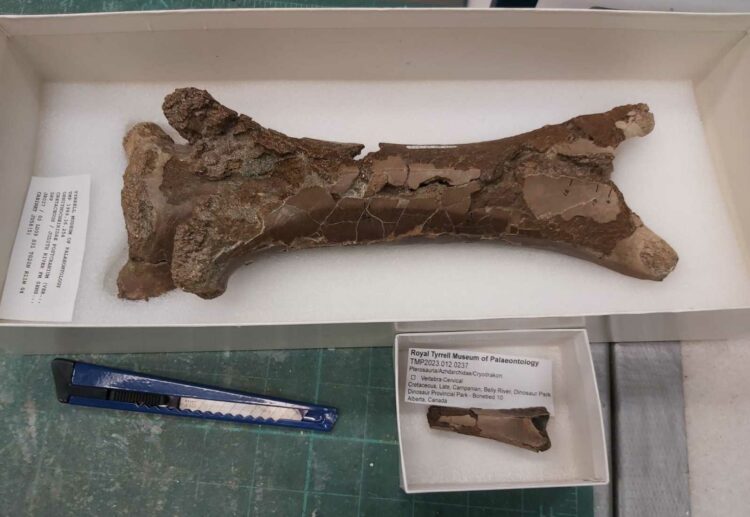A FOSSILISED neck bone found in Canada has shed some light on crocodile-like creatures from over 75 million years ago, the University of Reading has said.
A new study published in the Journal of Palaeontology today (Thursday, January 23) has shown signs of bite marks from crocodilian teeth, giving insight into predattion from the Cretaceous period.
Researchers from the Univeristy of Reading joined colleagues from Royal Tyrrell Museum of Palaeontology in Canada and the University of New England in Australia on a dig in Dinosaur Provincial Park in Alberta.
It came as part of an international field course which took place in 2003, led by Dr Brian Pickles from the University of Reading.

There they discovered a vertebra from a juvenile Azhdarchid pterosaur (Cryodrakon boreas) which bears a circular, four-millimetre-wide puncture mark from a crocodilian tooth.
The pterosaur had an estimated wingspan of around two metres; adults of the species would have been as tall as modern giraffes with a wingspan of around 10 meters.
Researchers used micro-CT scans and compared them with other pterosaur bones to confirm the puncture was not the result of damage during the course of fossilisation or during the excavation.
The puncture provides the first evidence in North America of ancient crocodilians opportunistically feeding on these giant prehistoric flying reptiles.
Other examples of Azhdarchid bones with possible crocodilian bites have previously been found in Romania.
Dr Caleb Brown from the Royal Tyrrell Museum of Palaeontology is the lead author of the paper said: “Pterosaur bones are very delicate.
“Finding fossils where another animal has clearly taken a bite is exceptionally uncommon – this specimen being a juvenile makes it even more rare.”
The University of Reading’s Dr Brian Pickles, co-author of the paper, said: “Bite traces help to document species interactions from this period.”
He explained: “We can’t say if the pterosaur was alive or dead when it was bitten but the specimen shows that crocodilians occasionally preyed on, or scavenged, juvenile pterosaurs in prehistoric Alberta over 70 million years ago.”
A full copy of the study is available to read through the DOI Foundation via: doi.org/10.1017/jpa.2024.12
























